Frugal hacks to help you get the most out of your smoothies and your grocery budget. Includes tips on freezing produce (oranges, anyone?), which vegetables go well in smoothies, and more.
This post contains affiliate links. That means if you click on my link and buy something, I will earn a small commission from the advertiser at no additional cost to you. Read my disclosure policy here.
For a long time, smoothies = extravagance in our home. Drinking one for breakfast meant I had to stretch the tiny grocery budget and we could actually afford frozen fruit and other luxuries. As a result, I got a lot of practice making smoothies out of nothing – out of scraps and leftovers. I also learned what parts of a smoothie are worth paying for.
The Perfect Smoothie Formulas
Obviously, everyone’s smoothie taste varies. If you like following a recipe, Green Thickies is a great resource. I’m the type that follows a formula rather than a recipe. So here is my signature Smoothie Formula.
Green Smoothies (1:1:2)
I will never complain if my vegetables taste like fruit. The formula for green smoothies is very simple, and you can adapt it to any size blender. Just remember 1:1:2.
- Essentially, you fill half the blender with smoothie-friendly vegetables (usually greens like spinach, kale, or spring mix – see below). Fill the other half with fruit, leaving a healthy 1-inch gap at the top of the blender.
2. My favorite fruit for smoothies is bananas and berries. But you can substitute the berries for a combination of peaches, pineapple, and mango. However, don’t substitute the banana! They provide most of the sweetness and creamy texture for a good smoothie.
3. Next, fill the blender with some kind of liquid (see suggestions below) until it covers the fruit. Then add any additional ingredients, like protein powder, flaxseed, etc (again, see the lists below).
Blend, blend, blend. Pour into a glass Mason jar, because if you’re drinking a green smoothie you might as well go full hippy mode.
All-Fruit Smoothies (1:1)
These are simple. Fill half of the blender with frozen banana and the other half with berries or frozen fruit blends. Sprinkle any add-ins (see below), then cover with liquid and blend.
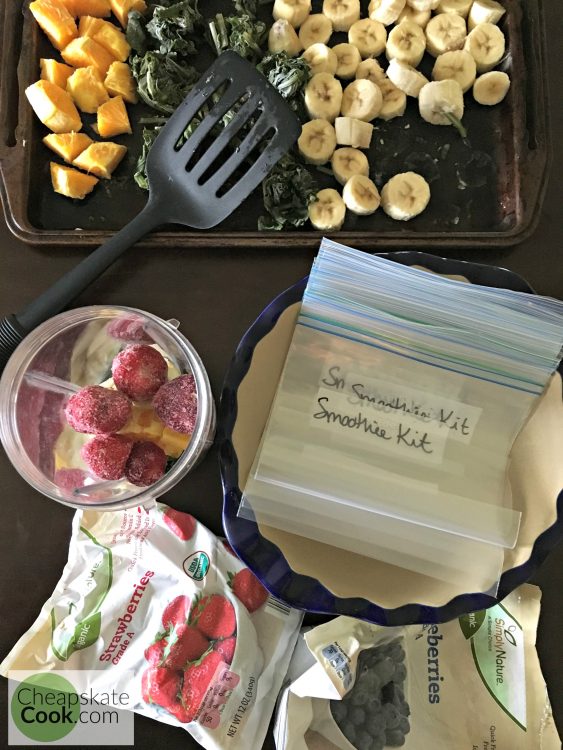
How to Find a Good Smoothie Blender
You can make a delicious smoothie with a cheap blender. However, you will make an amazing smoothie with an amazing blender.
We used a cheap blender for years, and it worked fine. However, when we added nuts and greens, we wound up chewing our smoothies. Gross.
When I want to chew my food, I make a salad. Or basically anything besides a smoothie.
So if you prefer all-fruit smoothies without adding seeds or nuts to it, a cheap blender will work for you.
If however, you want to make green smoothies or add seeds and nuts and get a really smooth, creamy texture, you will need to upgrade your blender.
For us, even though we have always lived on a budget, this was an easy upgrade because we love smoothies. For years, Chris made one every morning before work. My kids love homemade popsicle. For a few years, green smoothies was the only way I could get veggies into one of my kids.
Our blender has more than paid for itself.
My Favorite Smoothie Blenders:
– Nuritbullet Pro Plus (we bought ours refurbished, and we use it daily!)
– Ninja Professional Countertop Blender (I have several friends who swear by this!)
– Vitamix (We bought ours used from Craigslist and while I love it, I use the Nutribullet more!)
– Blendtec (comparable to a Vitamix!)
The Nutribullet Pro is my very favorite out of all of these. We use it daily, and its small size is really convenient.
Budget-Friendly Greens for Smoothies
Quality fruits and vegetables get expensive, especially when you add them to smoothies multiple times a week. Here are some of my favorite ways to save money on greens.
- Buy frozen – Here is where a great blender helps you save money. Frozen spinach generally cost less than fresh, and a good blender purees them no problem.
- Freeze your own – If I have a bag of fresh spinach or kale that we need to eat but I didn’t make plans for it, I toss it in the freezer. No need to prepare it in any way – simply close the bag to limit the amount of air that can get in.
- Buy a lot when it’s on sale or in season – Now that you know you can freeze it all, you can get the best price possible and keep it for months.
- Spinach and kale aren’t the only vegetables you can blend into smoothies – You can use swiss chard, beet greens, zucchini (like the core from making zoodles), summer squash, frozen broccoli, and avocado.
- Cucumber leftovers – If you want to go really frugal, check this. Sometimes I freeze cucumber peels and add a few to smoothies. Only 1-2, so it doesn’t monkey with the taste. Cucumber smoothies taste good, but I recommend you use a specific cucumber smoothie recipe. I just add a few peels to my regular banana and berry combinations
- Squash seeds – When you scoop out the seeds to roast a winter squash (butternut, acorn, pumpkin, spaghetti, etc.), try flash freezing them on a baking sheet, then break them into chunks and store them in a freezer bag. Another frugal way to add more plants to your diet, and it only takes 5 minutes.
Budget-Friendly Smoothie Fruit
Here are some of my favorite ways to save money on fruit for smoothies.
- Buy a lot when it’s on sale or in season – Flash freezing is my friend. When bananas go on sale because they’re overripe, I buy all of them. When we pick strawberries, I don’t bother taking off the green tops (more green, right?). I simply wash, flash freeze, and store in a freezer bag.
- Pick local – On our area, picking local, unsprayed berries is less expensive than frozen organic berries. You can find a Pick-Your-Own farm near you here.
- Price shop – Generally speaking, I find the best prices on bananas and berries at Aldi, Costco, and Trader Joe’s.
Save Money on Citrus
I love a little citrus in my smoothies. However, buying orange juice gets expensive. Mostly because people in my house drink the orange juice before it goes in the smoothies. Here’s how I fix that:
- Orange juice concentrate – Let’s be honest. Orange juice likely isn’t even actual oranges (go watch that video – it’s hysterical), so why pay for expensive bottled juice when we can just use concentrate? I prefer the taste of bottled when I drink it straight. But in a smoothie, it really doesn’t matter. To save money, I buy a can of concentrate, open it, then reseal it and leave it in the freezer. When I make a smoothie I simply scoop a teaspoon of concentrate out of the can and toss it in with the fruit or liquid. No one can “accidentally” drink it, and a $1 can of concentrate lasts for weeks.
- If you want real oranges – Snatch them up when they’re on sale and flash freeze them. Simply peel, chop, and freeze on a baking sheet until hard. Store in a freezer bag and toss a few pieces into your smoothie.
What Kind of Liquid Should I use in Smoothies?
This is perhaps the most flexible and cost-saving area. I’ve used all these ingredients in smoothies with great success. Each has its own unique flavor, so find one that works for you.
- Vanilla or fruit-flavored yogurt (contains more sugar than other options) and water
- Greek yogurt and water
- Homemade yogurt (very inexpensive)
- Cottage cheese and water
- Milk
- Almond milk
- Coconut milk
- Cashew milk
- If you have a high powered blender, try using just a tablespoon of raw nuts and water. It will make a sort of nut milk while you blend. I use this method because it’s extremely frugal.
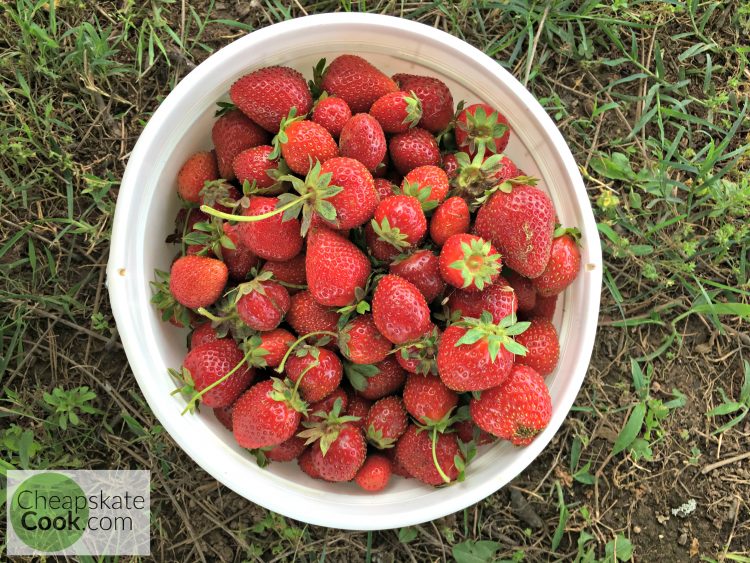
Budget-Friendly Smoothie Extras
People love adding fun things to their smoothies. I’m no exception, although I try to keep it frugal. The cost of powders, nuts, and seeds adds up quickly. Here are a few of the most inexpensive additions we use:
- Leftover oatmeal – Seriously. Assuming you didn’t add anything like cinnamon and raisins that will create a strange flavor, leftover oatmeal tastes great in a smoothie! It’s creamy, easy to blend, and can keep you full longer.
- Raw oats – You could also soak them in some yogurt overnight and add them to the smoothie.
- Beans (garbanzo/chickpeas or great northern beans) – Sounds crazy, but these mildly-flavored beans also add a creamy texture and more bulk to your smoothie. If you use vanilla or fruit-flavored yogurt, you probably don’t need to add any additional sweetener. Otherwise, I would add a drizzle of honey or extra fruit.
- Flaxseed – buying whole seeds is cheaper than ground flaxseed meal, and freshly ground flax is better for you than stale!
A few slightly more expensive additions we like:
- Quinoa – rinsed (important!), then cooked in water or milk
- Hemp hearts
- Chia seeds
- Nut butter – Almond and cashew are my favorite. With the Nutribullet, I can toss a few roasted nuts in the blender, and they turn into nut butter as I blend.
- Collagen powder
- Protein powder – I don’t love protein powder, but we use Vega or Orgain right now. It’s delicious!
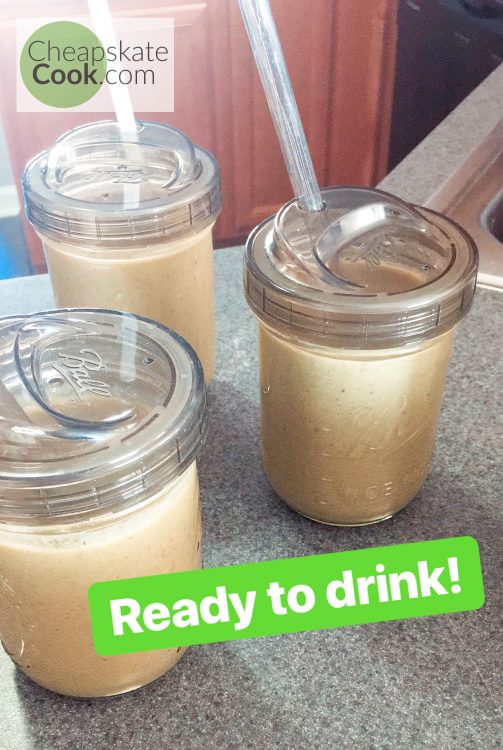
Smoothie Lids & Straws
We’ve received a lot of questions about the lids with straws that screw onto our Mason jars (they show up all the time on Instagram and Facebook Stories).
For years, we used whatever we had – cups, mugs, etc. A cup is a cup, my friend. When we started drinking smoothies more regularly, we bought a few reusable straws to make them more kid-friendly (read: less-spillable).
Then we found sturdy screw-on lids with straws for glass canning jars. These are amazing, convenient (read: even less-spillable), and you can use any size wide-mouth jar – a pint or quart jar. They also come in a small mouth size.
You don’t need these lids to make good smoothies, but they do give you extra hipster points.
What You Can Do Now:
What’s your favorite kind of smoothie?
If you found this post helpful, let us know! Leave a comment, share it on Facebook or Pinterest, and follow us on Instagram or YouTube for more!
Slash your grocery budget and feed your family real food! Get simple, frugal, real food menu plans every month for FREE in the Cheapskate Cooks’ 1-Min Email. Get your first one here.

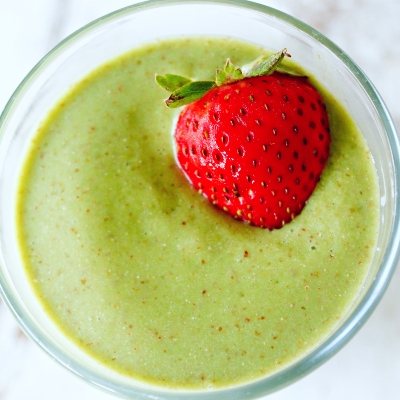
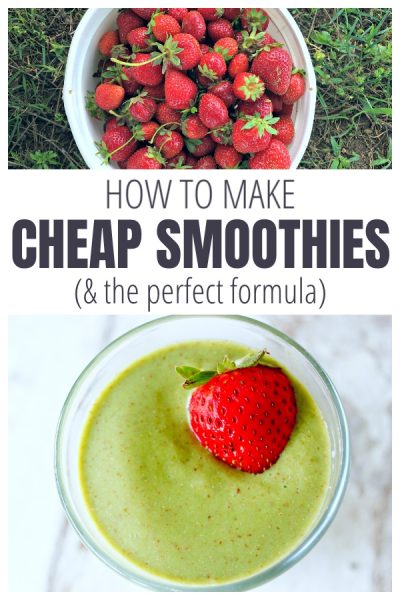
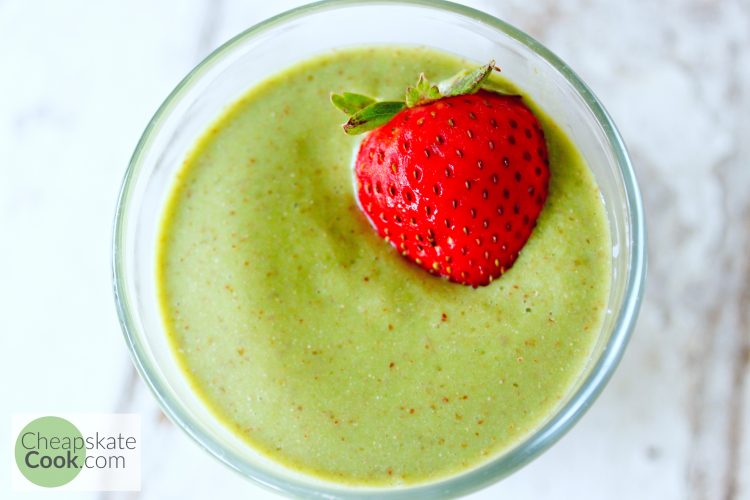

If you put just the greens in your liquid and blend for a couple minutes, a cheap Oster can do it. I only put nut butters in mine or grind the nuts first in a coffee mill. But I very rarely use nuts. Eggs are in about 99% of my smoothies. Quick, cheap, never know they’re there. Score!
Awesome! Great tip on the greens!
Forgot to say:
You can also make “fresh” coconut milk this way too. Put shredded coconut in with the greens to grind in liquid together for 3 to 4 minutes. There may still be some texture to the coconut but we don’t mind at all. I have no leftover coconut milk sitting in my fridge forlornly, waiting to be used. And I don’t go through the insane mess with nut milk bags and such. We dont use it for drinking, just in things.
1/3c per 1cup water seems fine. To be even better, put coconut in blender, cover with boiling water and let sit till cooled. Makes it blend easier. My brain left long ago, so remembering to start the smoothie hrs before? Not happenin’
Brilliant!
I love smoothies, they are one of the main sources of vegetable intake in my house. As you say, if my vegetables taste like fruit, I’m more likely to eat them!
Yes, Jessica!